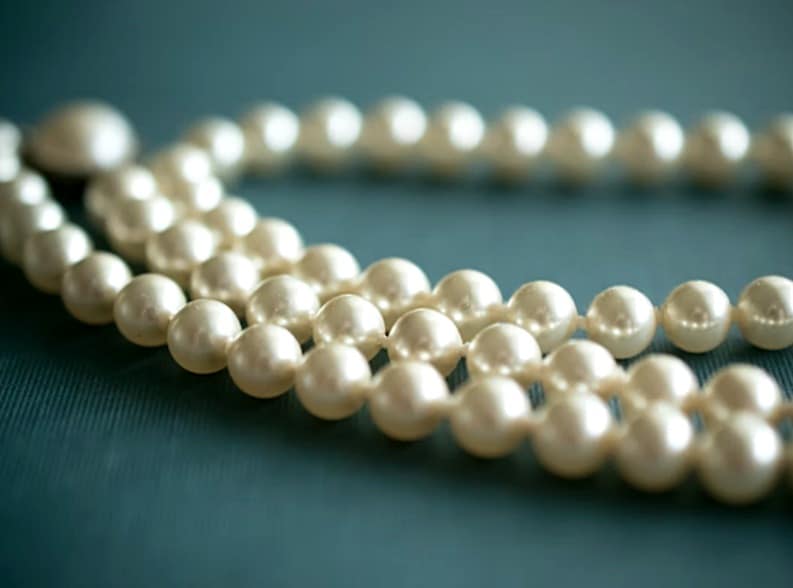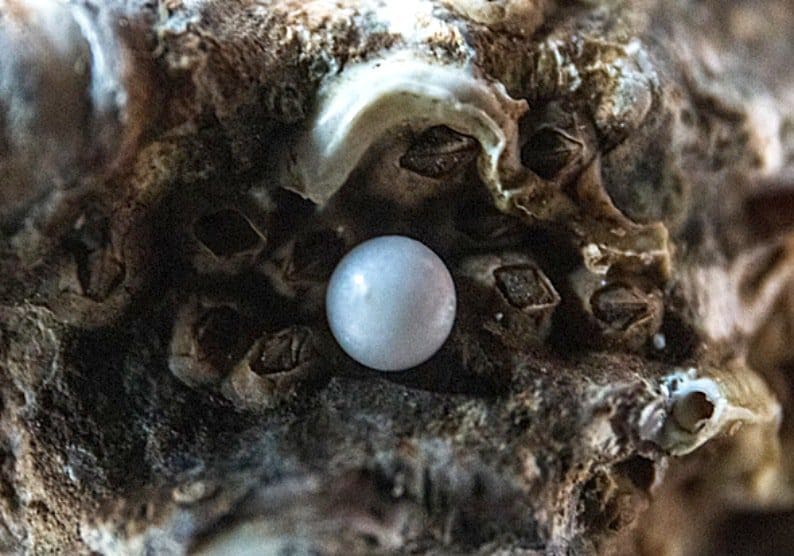words Alexa Wang
Pearls’ stunning beauty and ageless grace have mesmerized people for millennia. These lustrous gems have become synonymous with luxury and sophistication, adorning jewelry pieces that have been passed down through generations.
If you love pearls and are considering purchasing a quality pearl necklace or any other type of pearl jewelry, it’s essential to understand the different types and how to distinguish them. So, keep reading to explore the various pearls available in the market today and learn a few valuable tips on telling them apart.
Natural Pearls
Natural pearls are a testament to nature’s extraordinary artistry. They are formed when an irritant, such as a grain of sand or a parasite, enters an oyster or mollusk. The oyster produces layers of nacre around the irritant as a natural defensive mechanism, eventually turning it into a pearl.
Natural pearls are incredibly scarce, with an estimated occurrence rate of just one pearl spontaneously forming in approximately 10,000 oysters. Moreover, out of this already limited number, only a fraction possesses the desired qualities of roundness and luster suitable for use in high-quality jewelry.
Identifying natural pearls is a complex task. Unlike cultured pearls, natural pearls lack uniformity in shape, size, and color. They may display slight irregularities and imperfections, which enhance their character and charm. However, the most reliable method of identifying a natural pearl is through an X-ray examination, as the presence of a nucleus or core is an indication of a cultured pearl.
Cultured Pearls
Cultured pearls have revolutionized the pearl industry, providing a more accessible option for those seeking the beauty of pearls. These pearls are created through a human-assisted process that mimics the natural pearl formation. A small bead or tissue is introduced into an oyster or mussel, which triggers the secretion of nacre and eventually results in a pearl.
There are various cultured pearls, each with special qualities. Akoya pearls, originating from Japan, are known for their remarkable luster and are often used in classic pearl jewelry.
Freshwater pearls, produced by mussels in rivers and lakes, are admired for their versatility and affordability. South Sea pearls, grown primarily in Australia, Indonesia, and the Philippines, are renowned for their exceptional size and luxurious appeal. The last type of pearls, Tahitian, found in French Polynesia, boasts a mesmerizing range of colors and a distinctly dark hue.
Imitation Pearls
Imitation pearls, also known as faux or simulated pearls, are not produced by mollusks or oysters but are crafted to resemble the appearance of genuine pearls. These pearls are made using various materials, such as glass, plastic, or shell, and are often coated with a pearlescent substance to imitate the luster of real pearls.
Differentiating imitation pearls from genuine ones can be challenging, but there are a few telltale signs to look out for. Imitation pearls typically lack the depth and radiance found in natural or cultured pearls.
They may have a more uniform appearance, without the subtle variations in color and shape that occur naturally. Additionally, imitation pearls are usually lighter in weight compared to their genuine counterparts.
Factors to Consider When Evaluating Pearls
When purchasing a quality pearl necklace or any pearl jewelry, several factors contribute to their overall value and desirability. These factors include luster and shine, size and shape, surface quality, color and overtone, and the origin and brand of the pearls.
Luster
Luster refers to the reflective quality of a pearl’s surface. High-quality pearls exhibit a brilliant luster, which is a result of light interacting with the layers of the nacre. The surface should appear smooth and free from blemishes, ensuring a captivating shine.
Size and Shape
Size and shape also play a role in determining a pearl’s value. Larger pearls are rarer and therefore, more valuable, while well-rounded and symmetrical shapes are generally favored.
Color and Overtone
Color and overtone add depth and character to pearls. While white and cream-colored pearls are classic favorites, pearls come in a wide array of hues, including pink, lavender, and black. Overtone refers to the secondary color that appears over the pearl’s primary body color, enhancing its uniqueness.
Tips for Identifying Pearls
While it’s always best to consult a professional for a comprehensive appraisal, there are a few techniques you can employ to identify pearls on your own. Visual inspection is the first step. Observe the pearl’s luster, surface quality, shape, and color. A quality pearl will exhibit a rich, reflective luster, a smooth surface, and a pleasing shape and color.
Weight and temperature can also provide clues about a pearl’s authenticity. Genuine pearls tend to feel cool to the touch and have a certain weight to them, whereas imitation pearls may feel lighter and warmer.
Another simple test is the tooth test. Gently rub the pearl against your tooth. If it feels gritty or sandy, it may be a genuine pearl. Imitation pearls, on the other hand, will feel smooth because they lack the layered structure of the nacre.
Final Thoughts
Understanding the different types of pearls and how to tell them apart is crucial for anyone interested in the world of pearls, especially when considering the purchase of a quality pearl necklace or any other pearl jewelry.
By considering factors such as luster, size, surface quality, color, and origin, you can make an informed decision when selecting your pearls. So, take the time to appreciate the beauty and intricacy of these remarkable gems, and embark on your journey to find the perfect pearl jewelry piece that reflects your unique style and personality.









